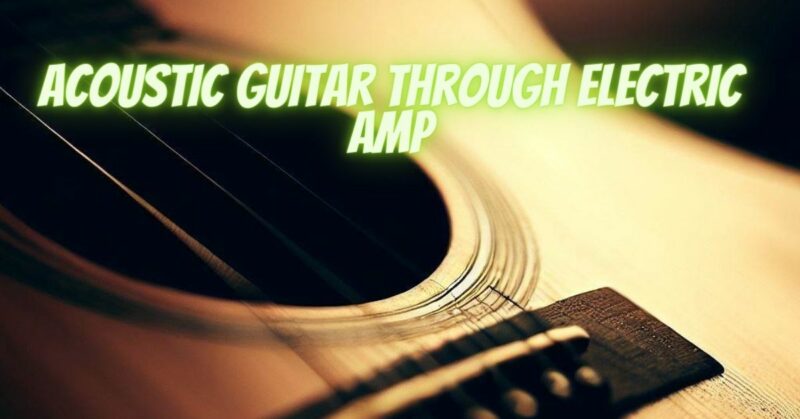In the realm of amplified music, the acoustic guitar stands as a versatile instrument, capable of producing both delicate fingerstyle melodies and powerful strumming patterns. While acoustic guitars are often played unamplified for their natural, resonant tones, there are instances where amplification is necessary to enhance their volume, projection, and overall sound quality.
The Traditional Approach: Acoustic Guitar Amplifiers
The most common approach to amplifying an acoustic guitar is to utilize a dedicated acoustic guitar amplifier. These amps are specifically designed to handle the unique tonal characteristics and output levels of acoustic guitars, offering several advantages:
-
Optimized Tonal Response: Acoustic guitar amps are tuned to accentuate the natural warmth, clarity, and dynamic range of acoustic guitars, ensuring a faithful reproduction of the instrument’s sound.
-
Integrated Effects: Many acoustic guitar amps incorporate built-in effects, such as reverb, chorus, and delay, allowing musicians to add depth and dimension to their sound without the need for external pedals.
-
Feedback Suppression: Feedback, the unwanted oscillation that can occur when an acoustic guitar is placed too close to an amplifier, is a common issue in live performances. Acoustic guitar amps often feature feedback suppression circuitry to minimize this problem.
Venturing into Electric Amplification: Exploring Compatibility and Challenges
While acoustic guitar amplifiers are the preferred choice for most musicians, there are situations where using an electric guitar amplifier may be considered. However, it is crucial to approach this with caution and understanding:
-
Impedance Mismatch: Electric guitar amps are typically designed with an impedance of around 8 ohms, while acoustic guitars have an impedance of around 150-300 ohms. This impedance mismatch can lead to several issues, including power loss, distortion, and potential damage to the amp or guitar.
-
Tonal Differences: Electric guitar amps are designed to handle the high-frequency output of electric guitars. Using an acoustic guitar with an electric guitar amp may result in a distorted, unnatural sound, as the amp may not be able to accurately reproduce the lower frequencies of the acoustic guitar.
Mitigating Risks: Strategies for Safe Acoustic Amplification through Electric Amps
If you decide to use an electric guitar amp with an acoustic guitar, there are steps you can take to minimize the risks:
-
Use an Attenuator: An attenuator is a device that reduces the output level of an amplifier. This can help to prevent distortion and damage to the amp or guitar.
-
Use a DI Box: A DI box, or direct injection box, converts the high-impedance signal of an acoustic guitar into a low-impedance signal that can be more easily handled by an electric guitar amp.
-
Use a Low-Gain Setting: Use a low gain setting on the amplifier to avoid distortion.
-
Monitor for Problems: Be sure to monitor for any signs of problems, such as distortion, overheating, or damage to the amp or guitar.
The choice of whether to use a dedicated acoustic guitar amplifier or an electric guitar amp for an acoustic guitar depends on various factors, including the desired sound, performance setting, and personal preferences. While acoustic guitar amps offer a more tailored approach to amplification, electric guitar amps can provide a different tonal palette or serve as a backup option in certain situations.
Ultimately, the key lies in understanding the strengths and limitations of each amplification method and selecting the one that best suits your individual needs and musical style. With careful consideration and a commitment to safety, you can effectively amplify your acoustic guitar and unleash its rich, expressive tones, whether through a dedicated acoustic guitar amplifier or a versatile electric guitar amp.


